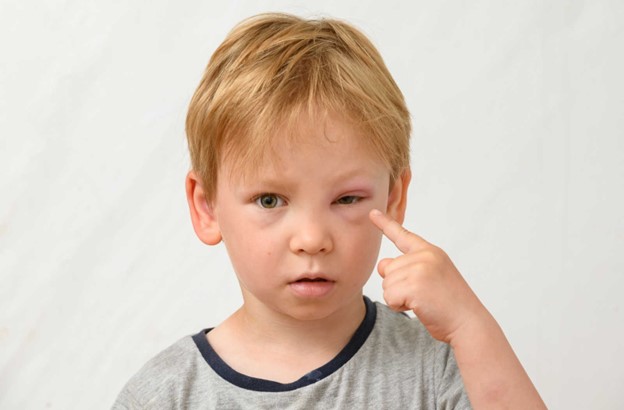ATI PN Nursing Care of Children with NGN 2020
ATI PN Nursing Care of Children with NGN 2020 ( 66 Questions)
A nurse in a clinic is speaking with a parent of a 1-year-old toddler who received her scheduled immunizations 1 hour ago. Which of the following findings reported by the parent is the nurse's priority?
rationale:
Swelling around the eyelids and mouth could indicate an allergic reaction, which can be severe in some cases. Anaphylaxis is a life-threatening reaction that can occur after immunizations. The nurse's priority is to assess and address any signs of an allergic reaction promptly. Swelling of the face, particularly around the eyes and mouth, is a red flag for potential anaphylaxis, and immediate intervention is necessary to prevent further complications.
rationale:
A temperature of 100.7 degrees Fahrenheit is considered a mild fever. While it's important to monitor for fever after immunizations, a mild fever alone may not be the nurse's top priority, especially if the child is otherwise stable. Fever can be a common post-immunization response and is often self-limiting.
rationale:
While monitoring the child's intake is important, only eating 2 ounces during the last feeding is not a priority concern compared to potential allergic reactions or fever. A temporary decrease in appetite following immunizations can be expected and might resolve on its own.
rationale:
Crying when the injection site is touched is a common response to discomfort from the shot. While it's essential to provide comfort and support to the child, this finding is not indicative of a severe reaction. It's not the nurse's priority compared to potential signs of an allergic reaction or a more significant fever.
Choice A rationale:
Swelling around the eyelids and mouth could indicate an allergic reaction, which can be severe in some cases. Anaphylaxis is a life-threatening reaction that can occur after immunizations. The nurse's priority is to assess and address any signs of an allergic reaction promptly. Swelling of the face, particularly around the eyes and mouth, is a red flag for potential anaphylaxis, and immediate intervention is necessary to prevent further complications.

Choice B rationale:
A temperature of 100.7 degrees Fahrenheit is considered a mild fever. While it's important to monitor for fever after immunizations, a mild fever alone may not be the nurse's top priority, especially if the child is otherwise stable. Fever can be a common post-immunization response and is often self-limiting.
Choice C rationale:
While monitoring the child's intake is important, only eating 2 ounces during the last feeding is not a priority concern compared to potential allergic reactions or fever. A temporary decrease in appetite following immunizations can be expected and might resolve on its own.
Choice D rationale:
Crying when the injection site is touched is a common response to discomfort from the shot. While it's essential to provide comfort and support to the child, this finding is not indicative of a severe reaction. It's not the nurse's priority compared to potential signs of an allergic reaction or a more significant fever.
